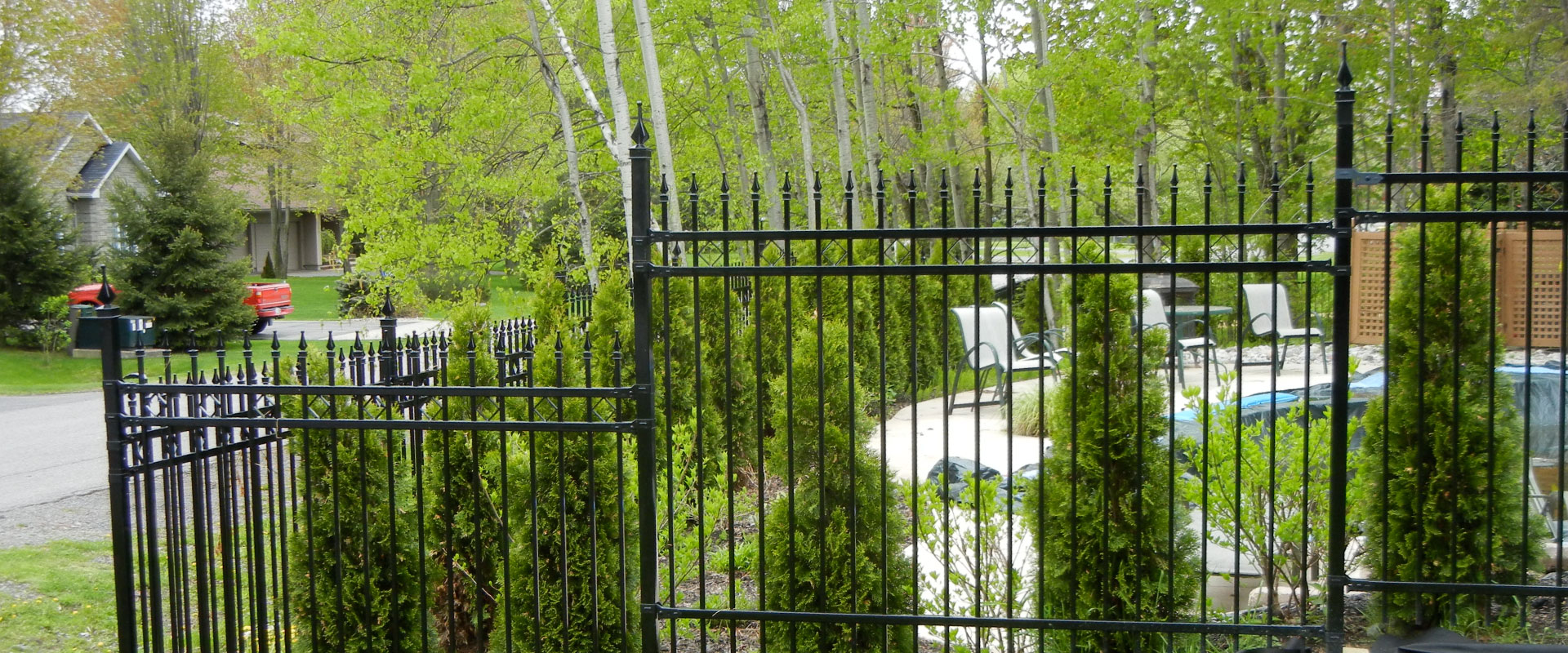All Categories
Featured
Mounting a fence is an exceptional means to improve your property's aesthetic appeals, security, and privacy. Nonetheless, prior to the installment starts, there are numerous essential steps you ought to require to ensure the process runs smoothly. Proper prep work not just assists prevent hold-ups and additional prices but also ensures that your fencing is set up correctly and lasts for years. Right here's a thorough overview to preparing your residential property for a fencing setup.
You need to also check for underground utilities, such as water, gas, and electrical lines, to avoid harming them during the setup procedure. Most local energies supply a "call-before-you-dig" solution, where they will mark the area of energy lines on your residential or commercial property.
![]()
As an example, if you require personal privacy, a strong timber or plastic fencing would be perfect. Chain-link or functioned iron may be the ideal option if security is your top priority. Your specialist will certainly also aid establish the elevation of the fence and any type of unique functions, such as gateways or decorative accents. Understanding your objectives for the fence will certainly make sure the last product satisfies your requirements.
![]()
Final thought. Proper prep work is crucial to a successful fencing installment. By understanding local guidelines, marking building lines, removing the installation area, ensuring tools accessibility, finalizing the style and materials, and notifying your neighbors, you can establish your task up for success. Taking the time to prepare your residential or commercial property makes sure that the installment procedure is smooth, efficient, and results in a fence that improves your residential or commercial property's worth and safety and security.
- Understand Regional Rules and Permits. Before proceeding with the fencing setup, it's important to familiarize yourself with local zoning guidelines and acquire any type of required permits. Many municipalities require property owners to make an application for a permit prior to mounting a fence, especially if the fence surpasses a particular elevation. Rules may also dictate the type of product you can make use of, the place of the fencing (whether it remains in the front backyard or along a property line), and the elevation limitations for fencings. Make certain to consult your city government or property owners association (HOA) to ensure compliance with any rules or standards that might use in your location.
- Mark Your Residential Or Commercial Property Lines. It's important to recognize the precise boundaries of your residential property prior to beginning the fence installment. This will aid protect against any type of boundary disputes with neighbors and make sure that the fence is put within your residential property lines. Think about employing a land surveyor to mark the borders for you if you're uncertain about where your home lines are. Many fence installment professionals likewise provide home line noting services. Having this quality will certainly also assist stay clear of any legal problems later on, particularly if the fence is being built along a shared property line.
- Clear the Installment Location. A significant part of preparing your residential or commercial property for a fencing installation is getting rid of the setup location. Additionally, you must get rid of any kind of existing fencings, old messages, or frameworks that are in the method.
You need to also check for underground utilities, such as water, gas, and electrical lines, to avoid harming them during the setup procedure. Most local energies supply a "call-before-you-dig" solution, where they will mark the area of energy lines on your residential or commercial property.
- Plan for Tools Accessibility. The setup of a fence will likely require hefty machinery, such as trucks for hauling products and devices for digging holes. It's important to ensure that there is very easy accessibility to your residential or commercial property for this devices. Notify your specialist in development so they can prepare the best course for distribution and installment if your residential property has a slim driveway or minimal access points. Clear any kind of barriers, such as vehicles, that may remain in the way, and make sure the professional has adequate area to work without disturbance.

- Settle Your Fencing Design and Materials. The following step is to complete the layout and material selections for your fencing. Consider the function of your fencing-- whether it's for privacy, safety and security, decoration, or merely marking boundaries. Discuss your preferences with the contractor to identify which material is finest suited for your demands. Typical secure fencing products include timber, plastic, chain-link, and light weight aluminum, each offering unique advantages.
As an example, if you require personal privacy, a strong timber or plastic fencing would be perfect. Chain-link or functioned iron may be the ideal option if security is your top priority. Your specialist will certainly also aid establish the elevation of the fence and any type of unique functions, such as gateways or decorative accents. Understanding your objectives for the fence will certainly make sure the last product satisfies your requirements.
- Educate Your Next-door neighbors. If your fence will certainly be mounted along a shared building line, it's considerate to educate your neighbors ahead of time. While you do not require your next-door neighbors' approval to set up a fencing on your home, maintaining them in the loop is an excellent method to preserve excellent connections.
- Prepare for Post-Installation Maintenance. When your fence is installed, it will need routine upkeep to maintain it in good condition. Normal maintenance will ensure that your fencing continues to be useful and cosmetically pleasing for several years.

Final thought. Proper prep work is crucial to a successful fencing installment. By understanding local guidelines, marking building lines, removing the installation area, ensuring tools accessibility, finalizing the style and materials, and notifying your neighbors, you can establish your task up for success. Taking the time to prepare your residential or commercial property makes sure that the installment procedure is smooth, efficient, and results in a fence that improves your residential or commercial property's worth and safety and security.
Latest Posts
Montclare Auto Repair: Your Local Specialist for Professional Engine & Brake Work
Published Apr 20, 25
2 min read
Discover the Certified Mechanics Behind Montclare Auto Repair - Here to Serve You
Published Apr 20, 25
2 min read
Making the Most of Your WyHy Monitoring Account
Published Apr 20, 25
1 min read
More
Latest Posts
Montclare Auto Repair: Your Local Specialist for Professional Engine & Brake Work
Published Apr 20, 25
2 min read
Discover the Certified Mechanics Behind Montclare Auto Repair - Here to Serve You
Published Apr 20, 25
2 min read
Making the Most of Your WyHy Monitoring Account
Published Apr 20, 25
1 min read